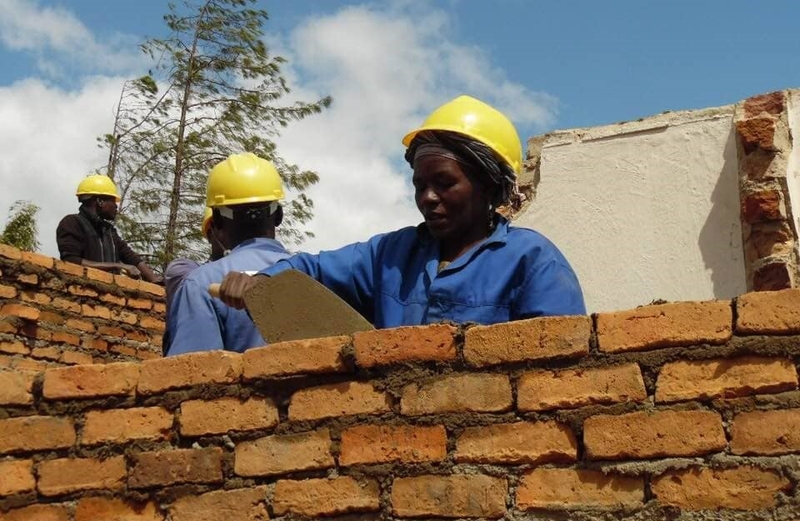Learning by doing: An experiential learning approach to technical skills development


Institution: Kasama Community Technical College
The Technical and Vocational Education (TVET) Sector in Malawi is rapidly growing and is recognized by the Malawian Government as one of the critical drivers for socio-economic development. The Government is establishing Community Technical Colleges in each of the country’s 28 districts, and donors such as the World Bank have supported the formation of Community Skills Development Centres across the country. The increase in the number of learning institutions has increased the number of students enrolling and graduating significantly; it has also increased the number of students that require attachments in the industry to complete their programmes. Unfortunately, the industry has limited relevant spaces for attachment, seeing trainees battle to satisfy all course requirements.
An innovative approach has been tried in the country’s construction sector to reduce the cost of training while at the same time maximizing practical skills acquisition. Young people are drawn from two streams.
Stream 1:Young people drawn from the informal sector
Thirty-one (31) young people with secondary school certificates but not registered for any formal training. These learners were drawn from the Chitipa district and they focused on entry-level assignments-brick-laying and carpentry.
Stream 2: Registered trainees from across the country
Trainees from various construction occupations, registered withy technical colleges across Malawi. These learners completed their theoretical modules but required "attachments" to gain practical experience in industry.
- The two groups participated in the practical construction of the Kasama Community Technical College. A structured on-the-job process was used, aligned to a Competency-Based Education and Training Approach. Trainees completed specified tasks under the supervision of trainers; the diagram below reflects the three levels and types of trainers involved in the on-the-job training.
- The learning process while mostly practical was highly structured, monitored and assessments verified.
- The project was accomplished with multiple stakeholders, each having specified roles and responsibilities to ensure the maintenance of quality and consistent standards.
- The approach is a clear departure from the traditional practice to construction and learning.
| Stakeholders | Roles and responsibilities |
| Trainers | conducted on-the-job training |
| Specialists from the TVET authority | led monitoring of training and assessment standards. |
| Industry engineers | Did verification |
The following are the achievements of the model:
- The informal sector group completed their training. The official opening of the school will be on the 2nd of May 2019, where these trainees will receive Level 1 Certification. These learners have also registered a construction company called- Amasak (Kamasa spelled backward).
- Over 142 students in various occupations were placed under one site and successfully covered industry modules.
- Trainers from various colleges and occupations got attached at the site to improve their knowledge
- TEVET Service Centre staff is handling the project exposed to more skills and expertise in handling construction work.
Success factors
- The quality of training and learning was enriched and enhanced, given the ability to use tools, equipment, and resources used in industry. The learning space completely mirrored the “real world of work.”
- Sufficient coverage of practical modules for many trainees of under one project
- Multiple trades under one project, including- Bricklaying, Plumbing, Carpentry, Fabrication and Welding, Tailoring and Electrical Installation
- Bringing together various skills and expertise (National Colleges, Community Technical College, Community Skills Development Centres, Industry Trainers, and the Informal Sector Trainers)
- Exposing learners to more skills than just their area of occupation (i.e., Bricklaying students were exposed to other trades such as Carpentry, Plumbing, and Electrical Installation)
- Use of environment-friendly initiatives such the steel-roof trusses, Soil Stabilised Blocks and the Solar Electrical System.
Challenges
- Limited water for construction
- Since the construction process was also a training model, it took longer than usual.
- Accommodation for various trainers and trainees was a challenge being a rural area
- Local activities such as market days would interfere with work on the site
- In some cases, students would leave the site and do other piece works found in the district
Moving Forward…
- Governments should make deliberate policies to use technical and vocational learners in its various public projects as part of their training.
- There is a need to strengthen the collaboration between Regulatory Bodies, Colleges and the Industry.
- As numbers of people accessing TVET continue to rise, there is a need to plan for more innovative ways of giving them relevant industrial modules despite a shortage of resources.
- This model will be replicated to construct schools in Malawi.
